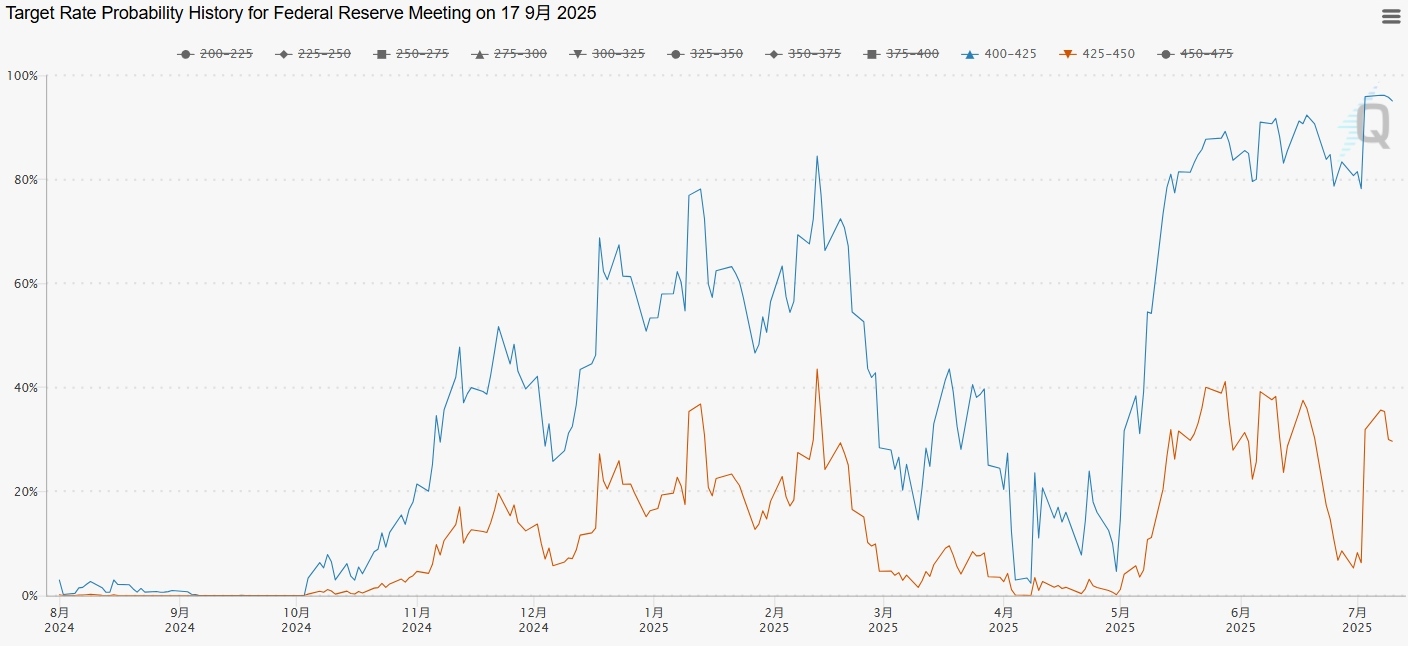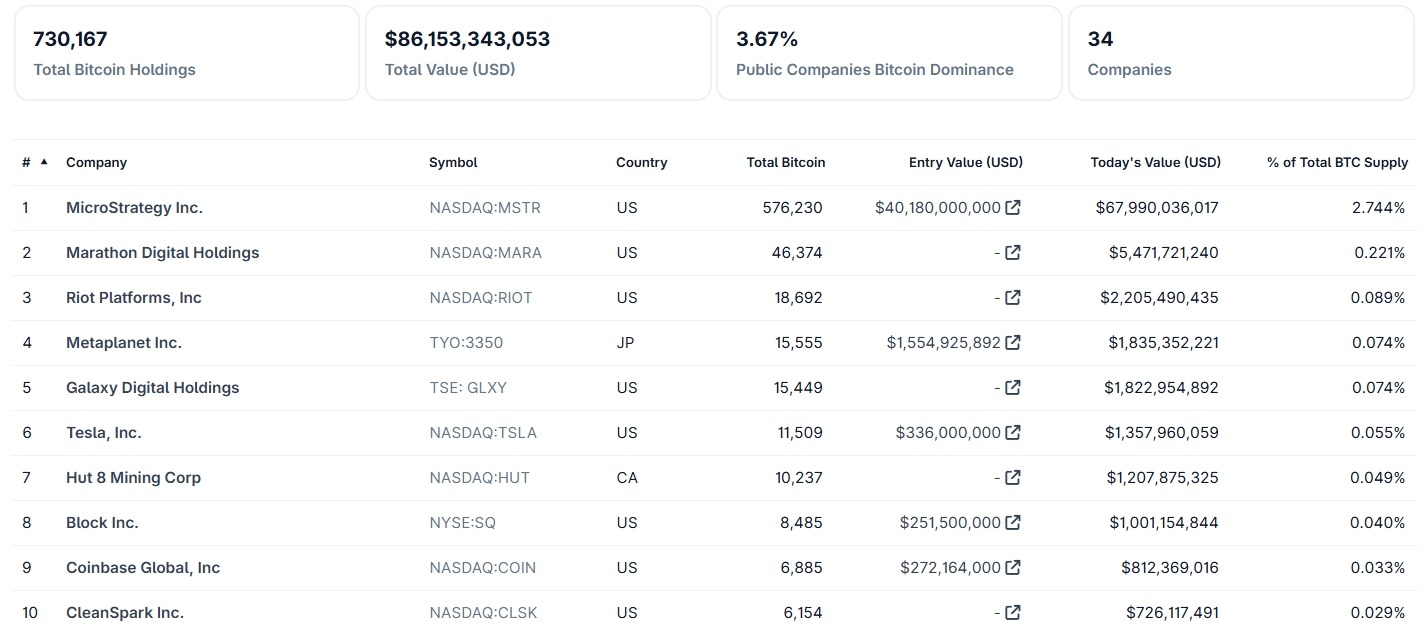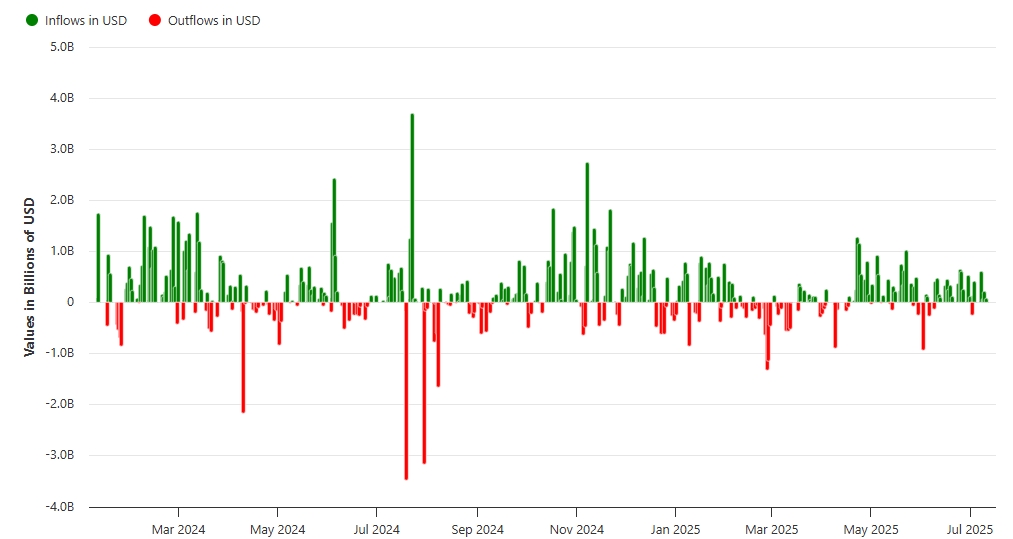The Crypto Bull Market Returns — Four Charts Show the Catalysts Behind Bitcoin’s New High


TradingKey - Despite ongoing tariff risks from the Trump administration, Bitcoin (BTC) and NVIDIA, the most valuable stock in the U.S., have both hit new highs. After months of hovering near the $100,000 mark, Bitcoin has regained momentum — driven by stablecoin regulation, Fed rate cut expectations, corporate adoption, and strong inflows into Bitcoin ETFs.
On July 11, Bitcoin rose about 7% in 24 hours, briefly touching a new all-time high of $118,730, and currently trading at $118,710. Year-to-date in 2025, BTC has gained 27%.
Stablecoin Regulation Is the Turning Point
Analysts believe that the development of stablecoin regulation is a key inflection point for digital finance.
Before returning to the White House, President Donald Trump made multiple pro-crypto statements — and once re-elected, he announced plans to establish a national Bitcoin reserve, positioning the U.S. as the "crypto capital of the world."
After the U.S. passed the GENIUS Act on stablecoins in June and Hong Kong launched its stablecoin regulatory framework in June, mainland China also began showing signs of regulatory openness — with tech giants like Alibaba and JD.com planning to apply for stablecoin licenses.
With Hong Kong’s stablecoin regulations set to take effect on August 1, and more brokers preparing to offer digital asset trading services, the region could see a surge in institutional interest — potentially triggering a new “gold rush” in crypto markets.
LVRG Research noted that investors are closely watching recent regulatory developments — including the U.S. GENIUS Act and potential removal of burdensome broker tax rules. As legal complexity and high compliance costs fade, these moves are fueling growing institutional demand for Bitcoin and major cryptocurrencies.
Fed Rate Cuts: Late but Inevitable
Although expectations for aggressive Fed easing have cooled since the start of 2025, the central bank remains on track for a loosening cycle.
Most economists and Fed officials now expect two or more 25-basis-point cuts this year, starting in September.
President Trump has repeatedly criticized Fed Chair Jerome Powell, and is reportedly compiling a list of potential successors who would be more supportive of rate cuts.
On Wednesday, July 9, Trump said current U.S. interest rates were at least 3 percentage points too high — a sharper stance than his earlier calls for cuts of 1–2 percentage points.
Meanwhile, Fed Governor Christopher Waller emphasized that there was still no clear sign of tariff-driven inflation, and that he remains open to a rate cut in July — regardless of political pressure.

September Rate Cut Probability, Source: CME FedWatch
Institutional Demand for Bitcoin Grows
Thanks to Bitcoin’s increasing role as a mainstream store of value and improving regulatory clarity, corporate adoption has moved beyond early-stage enthusiasts and tech-focused firms.
Major U.S. listed companies are now adding Bitcoin to their balance sheets — whether:
- As part of core business operations (e.g., Coinbase, Marathon )
- A strategic pivot (e.g., Strategy, formerly MicroStrategy, and imitators like Twenty One Capital )
- A long-term bet on blockchain technology (e.g., Elon Musk and Tesla )

Bitcoin Holdings by Public Companies, Source: Coingecko
As of end-June, Strategy held nearly 600,000 BTC, over 2.7% of total supply, worth around $68 billion. The company reported a 19.7% return on BTC holdings in 2025, following a 74.3% gain in 2024.

Strategy’s Bitcoin Holdings, Source: The Block
Market observers believe more corporations may follow suit — integrating Bitcoin into their long-term asset allocation strategies.
Presto Research analysts noted that while short-term uncertainties — including trade policy and fiscal deficits — remain, several key factors are supporting sustained growth in crypto: the onset of a global easing cycle and rising institutional participation.
Bitcoin ETFs Keep Growing
The approval of spot Bitcoin ETFs opened the floodgates for institutional investment. To date, Bitcoin ETF inflows have reached $148 billion.

Spot Bitcoin ETF Net Inflows, Source: Bitbo
On Wednesday, July 9, the cumulative net inflow of ETFs such as IBIT and ARKB hit a record $50.16 billion, marking the first time ETF flows surpassed the $50 billion milestone.
BTC Markets analysts described this as a defining moment in Bitcoin’s institutionalization. This rally is not driven by retail speculation, but by steady inflows from asset managers, corporate treasuries, and wealth platforms.
Unlike the speculative frenzy of 2021, this bull run reflects a shift in macro strategy — with Bitcoin increasingly viewed as a long-duration asset rather than an outlier risk asset.






